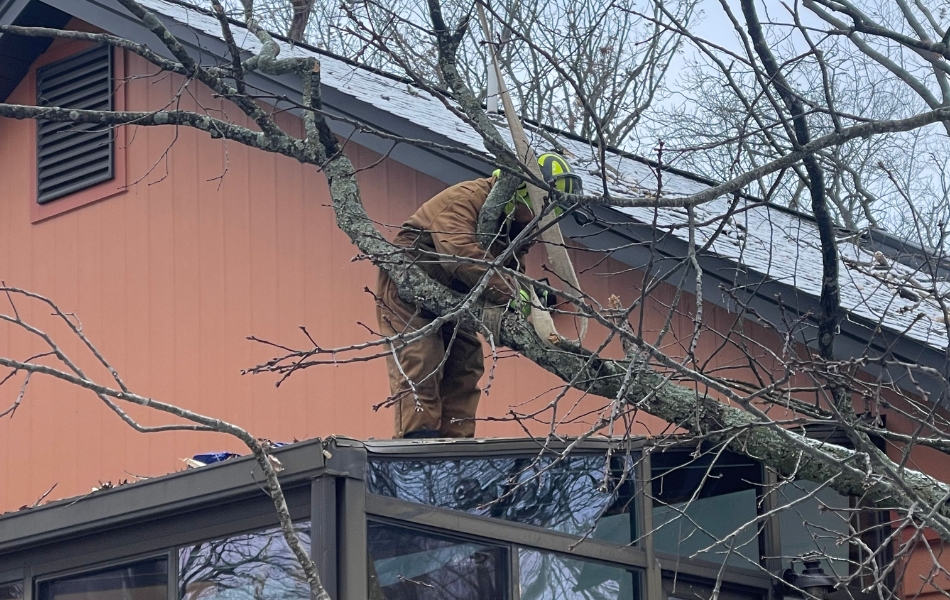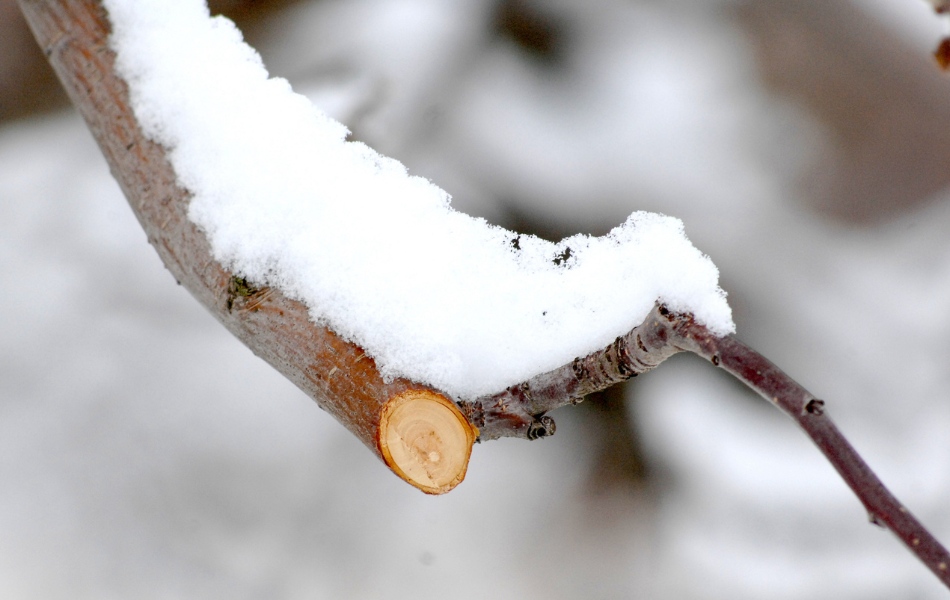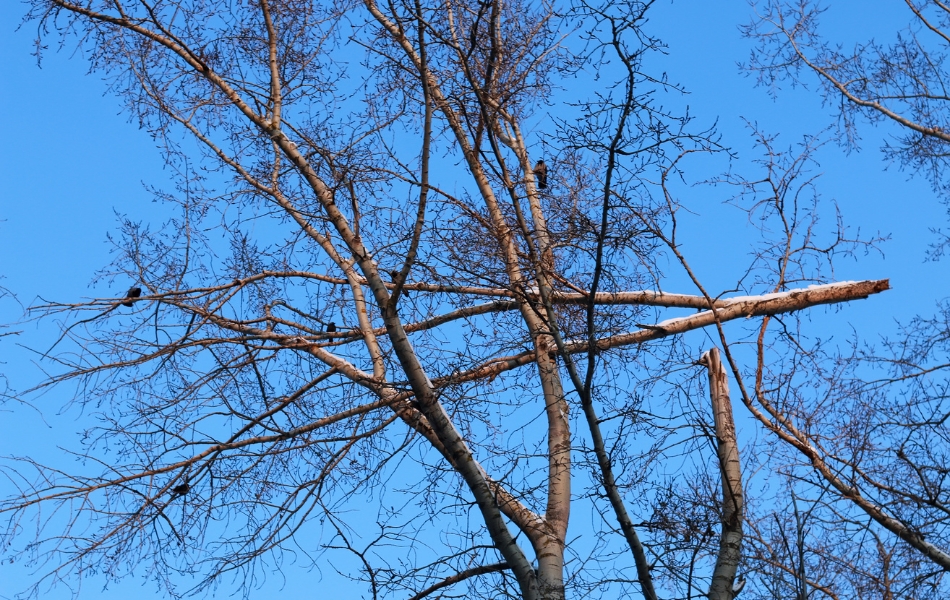Yellow Leaves? How to Spot Tree Disease in St. Louis & St. Charles Counties
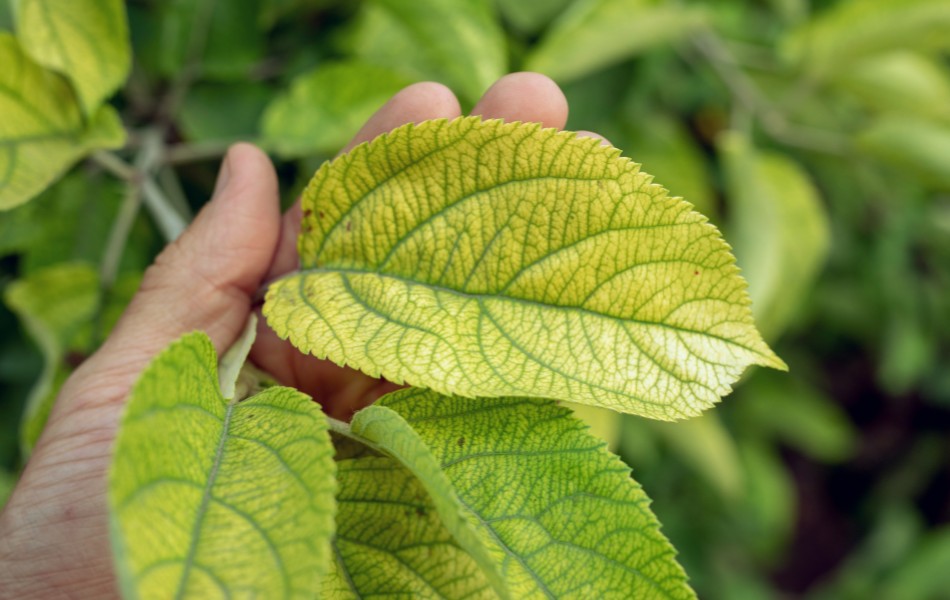
Yellow leaves, dead branches, or early leaf drop? Learn how to spot tree diseases early in St. Louis and St. Charles before they become a bigger problem.
Have you ever seen a few discolored leaves in your tree and wondered if you should be concerned? You’re not alone – and while sometimes it’s nothing, it can also be an early sign of a serious tree disease. Knowing what to look for can help you catch problems early and avoid costly damage. Here are some of the most common symptoms to watch for in St. Louis and St. Charles County trees and when it’s time to call in an expert.
Key Takeaways:
- Common tree diseases in the St. Louis and St. Charles areas include Dutch elm disease, apple scab, anthracnose, oak galls, oak wilt, and powdery mildew.
- Warning signs of tree diseases include wilting leaves, discolored or spotted foliage, dead patches in the canopy, blemishes on fruit, and mold on leaves.
- Early detection and diagnosis by a Certified Arborist are crucial for effectively treating tree diseases and potentially saving affected specimens.
- While minor tree issues might be handled by homeowners, serious diseases like Dutch elm disease or oak wilt require professional treatment with proper techniques and chemicals.
- Preventative measures such as improving soil health, proper pruning for air circulation, and preventive treatments by arborists can help protect valuable species from disease.
Common Tree Diseases in the St. Louis Area
Trees in St. Louis and St. Charles counties face threats from several diseases. The damage they can do ranges from minor aesthetic damage to outright killing the tree in a few seasons without prevention or treatment. The most common tree diseases in our area include:
PRO TIP: Diseases aren’t the only thing we have to worry about in Missouri, as our trees also face threats from insects. These bugs may be able to kill your tree, spread a disease to it, or harm its aesthetics. If you want to learn more about the topic, see our previous article on the common tree pests in Missouri.
5 Signs Your St. Louis Tree is Dealing with a Disease
While different diseases cause various symptoms, there are some typical signs to watch out for indicate that something may be wrong with your tree.

1. Wilting Leaves
Leaves should be green and firm during the growing season. While the occasional leaf that looks damaged or unhealthy likely isn’t enough to elicit concern, if you see many leaves in your trees that appear to be wilting, it should be a wake-up call that something is wrong with your tree.
Wilting leaves do not always point to a disease, as there are many reasons why it may occur. The problem may be a disease in your tree that limits water transportation to and from the leaves. Or it could be an issue like drought or heat stress. Have an arborist examine your trees and let them provide you with an accurate diagnosis of the problem.
2. Discolored or Spotted Leaves
Leaves are often one of the first parts of the tree to display a warning that something is wrong. If a tree’s leaves aren’t green and instead have spots and blemishes on them, it could be a sign of a disease infection.
For instance, anthracnose is a common tree disease that produces dark spots on leaves and evergreen foliage. While it is not fatal to trees, it does damage their looks and can stress a tree as it will have to regrow the damaged leaves to aid in photosynthesis.
Discolored leaves can also point to problems unrelated to disease, such as a nutrient deficiency in your soil or a pH imbalance.
3. Dead Leaves and Patches in the Canopy
Leaves and branches can end up dead for several reasons, such as salt damage or insect attacks. However, diseases also kill large patches of your tree’s canopy. One of those diseases is the deadly Dutch elm disease (DED).
DED will first cause your leaves to become discolored before they eventually turn brown and then fall in the summer. DED affects all native elm trees and can quickly kill them. If you catch DED early, you may be able to remove the infected branches to save the tree.
As soon as you see dead patches in the canopy, it’s time to have an arborist diagnose what is ailing your tree. Prompt action is vital whether it is a disease or some other problem.
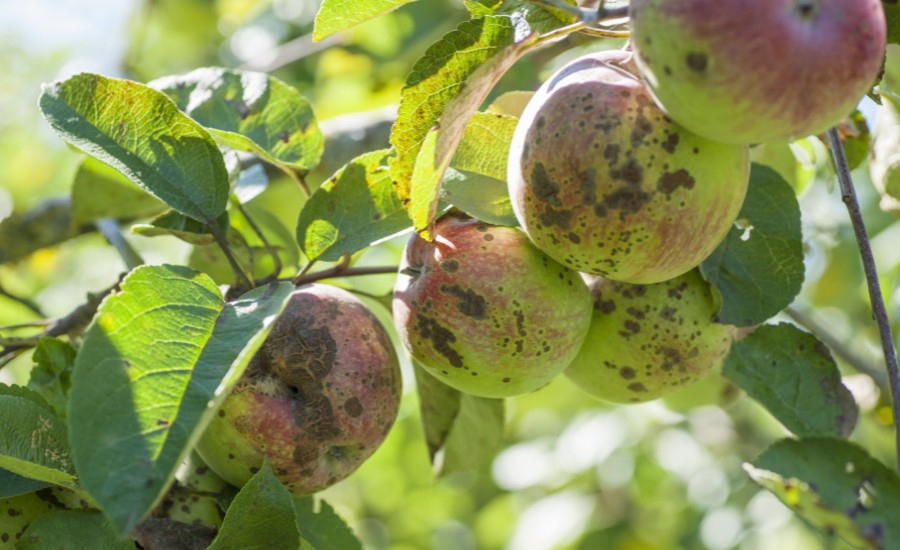
4. Blemishes on Fruit
Many Missouri homeowners grow fruit trees to add some interest to their property throughout the year and enjoy the harvest. However, if you examine your fruits and notice spots on them, it could be a sign that your tree is dealing with a disease like apple scab.
Apple scab is a fungal disease common to Missouri that leaves spots on leaves and fruit. These scabby areas will make your fruit look worse, and if you want to eat it, you’ll likely want to cut away the scabbed portions.
5. Mold or Fuzz on the Leaves
Mold and fuzz can develop on your tree’s leaves, especially when conditions are favorable for their development (wet and humid). If you see this on your tree, it is likely a sign of a fungal infection like powdery mildew or black sooty mold.
While these mold problems are typically not fatal to a tree, they will limit the leaves’ ability to perform photosynthesis and make your tree look uglier.
Frequently Asked Questions About Tree Diseases in St. Charles and St. Louis County
You can never have enough information about tree diseases and how to spot them. We’ve answered some common questions homeowners have about diseases and how they affect their Missouri trees.
What should I do when my tree has signs of disease?
If you notice any of the typical disease symptoms, you’ll want to have an arborist inspect your trees as soon as possible. Catching a disease early can be the difference between saving a tree and removing a dead one.
Can I treat a tree for a disease myself?
While you may be able to handle small jobs like removing a few branches from a diseased ornamental yourself, you’ll need professional help to deal with serious diseases. Applying chemicals to deal with problems like Dutch elm disease or oak wilt requires a professional. Using the improper dosage, injecting it at the wrong time, or damaging the tree while trying to help it will do more harm than good.
What are some methods to protect my trees from developing a disease?
Some typical tips for preventing disease include the following:
- Keep your tree vigorous by improving the soil’s health
- Prune trees to improve air circulation and lower the risk of mold development
- Have an arborist perform preventive treatments for high-value trees
Which trees are most at risk of developing a disease?
Some trees that are more at risk of disease infection in Missouri are:
- Oaks
- Elms
- Spruces
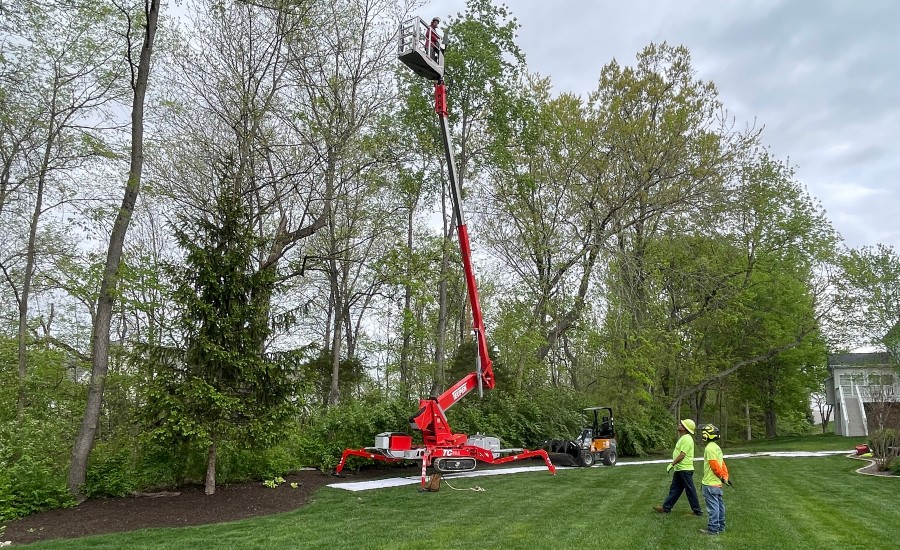
Regular care like pruning can help make your trees more vigorous and resistant to disease.
When You Need Help Diagnosing, Protecting, and Treating Your Trees, Call Mathias Precision!
When you notice something off in your tree, don’t wait to see if it gets worse. Tree diseases don’t fix themselves and the longer you wait, the fewer options you’ll have. If you’re concerned about the health of your trees, Mathias Precision Tree Service can take a look and help you figure out the next step.
We have ISA Certified Arborists on staff who know what disease symptoms to look for to diagnose your trees accurately. Once they know what the problem is, they can recommend the appropriate treatment and ways to prevent future problems. Call us today at 314-322-7690 or request an estimate online for help with sick trees.
